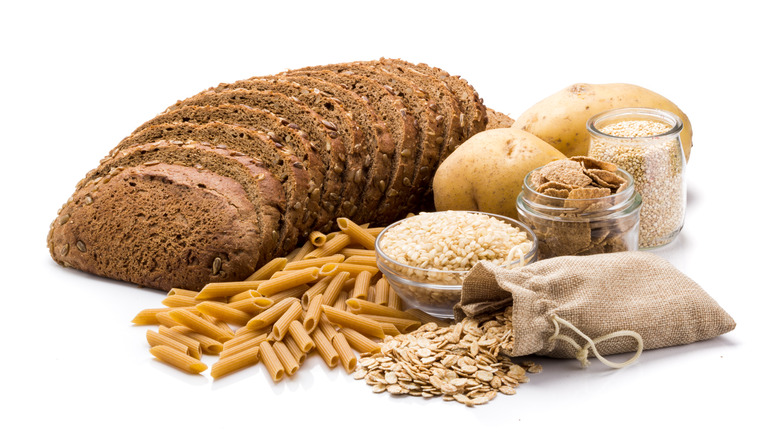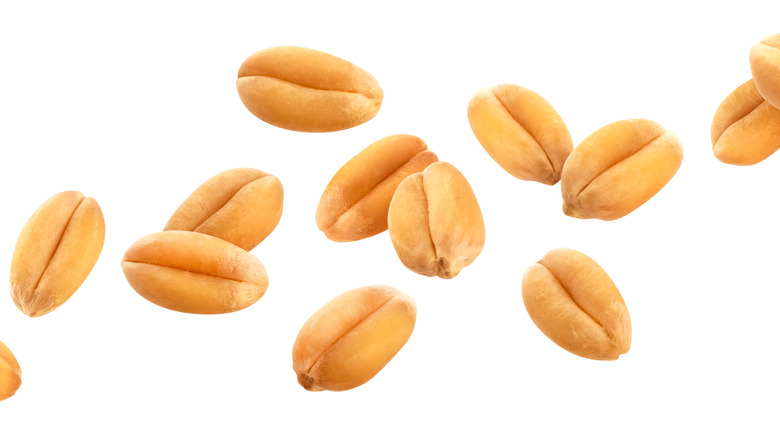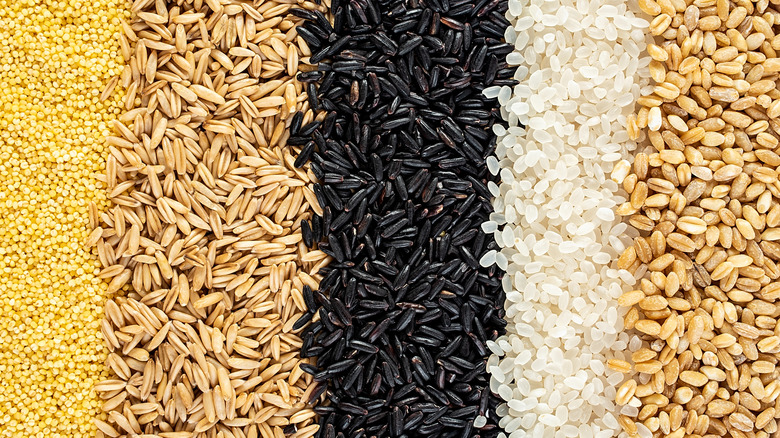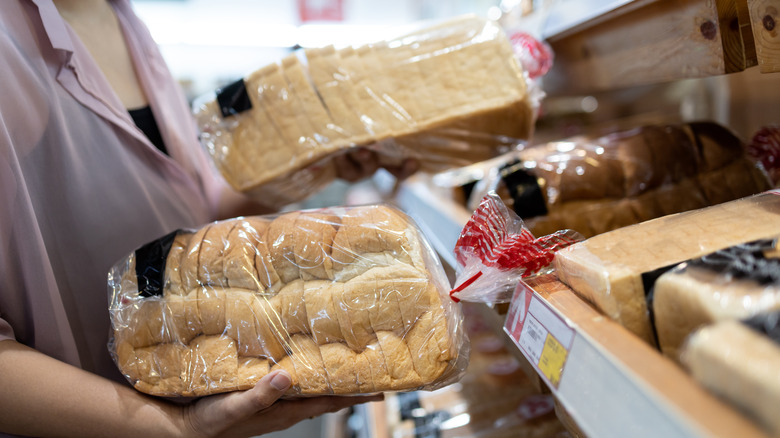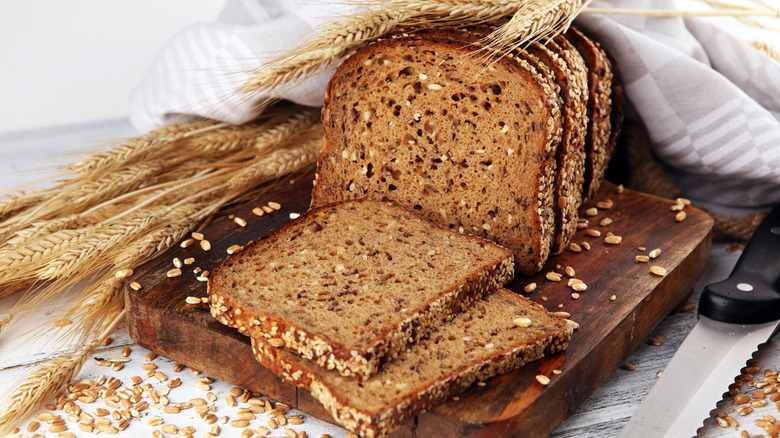Whole Wheat Vs Whole Grain: What's The Difference?
For those of you who have been trying to eat healthier, it is probably safe to say you have switched out many things for whole wheat or whole grain versions. These products are known to be great for improving health and helping with weight loss, says Healthline. It can be tricky knowing which to buy and why.
Walking down any bread aisle at the grocery store can be overwhelming, with what seems like hundreds of different options to choose from. Then there are also whole wheat pastas, multigrain cereals, the options are almost too endless. Both claim healthy benefits, but it's hard to know where to start, per Taste of Home.
While you can't necessarily go wrong with either option, it is good to know the difference between whole wheat and whole grain. You may assume they are the same, but they are two healthy options with two different definitions, says Well + Good. It's ok, Mashed will break down the differences for you!
What is whole wheat?
Whole wheat bread is made from wheat kernels that contain bran, germ, and endosperm, which all come from the kernel, per Taste of Home. When you see whole wheat bread, you know you are getting the nutritional benefits of all three. White breads filter those out.
The biggest difference is that whole wheat is strictly just a whole wheat kernel, no other kind. When buying bread at the store, though, wheat bread and whole wheat bread are not the same. If you buy just regular wheat bread, you are simply buying bread made with wheat flour. If you want all the kernels, then you need to go for whole wheat bread, says Real Simple. One little word makes a world of difference.
This difference makes whole wheat bread healthier than just wheat bread because it contains bran, germ, and endosperm. Bran is rich in B vitamins and minerals, the germ has healthy fats, vitamins E and B, and antioxidants, and the endosperm has starch (via Healthline).
What is whole grain?
Whole grain is different because while it does include wheat, it is also mixed with other grains like oats, brown rice, or barley. So, it is a whole lot of grain! If you don't like wheat bread, whole grain bread is great to try as it contains different kinds of flavors. But it has to say "whole," says Taste of Home.
Whole grain products still include bran, germ, and endosperm because it still includes the whole kernel, just different kinds of kernels. Similarly to whole wheat, whole grain bread needs to have that word in front of it at the store to get all the nutrients you want.
In fact, whole grain foods will keep you full longer than the refined varieties, offer protein and B vitamins, and are about equal in nutritional value to whole wheat (via Healthline). Well + Good adds that according to registered dietitian Chelsey Amer, RD, they'll also lower the chances of heart disease and diabetes.
How to find whole grain products
Nowadays, many things are visibly marked with whole grain or whole wheat labels. Think of pasta, for example. The front of each package will say it and the noodles will also appear to be a darker brown color rather than the usual creamy light brown. The accompanying whole grain stamp is pretty easy to spot, says the Whole Grains Council.
However, there are different levels of whole wheat or whole grain. If a stamp says 100% whole, then each serving should have a full serving, if not more, of whole grain. If a stamp says 50%, it will only have about half a serving of whole grain.
If you are a bit confused by looking at the ingredients label, remember this: 100% whole grain means at least three grams of fiber per 100 calories, per Eating Made Easy. The stamp is rectangle-shaped and has a bold border. Think of this as the stamp of approval!
Is whole grain bread healthier?
The real answer is that there isn't one that is more healthy than the other, with multiple sources stressing that both offer health benefits. It is all about looking at the ingredients on each particular whole wheat or whole grain item. Even if they have the stamp, take a peek at the back.
Speaking with Well + Good, registered dietitian Chelsey Amer, RD, noted that some breads do have added sugars and said each slice of either option should have less than two grams of sugar. But since both kinds contain the germ and bran, which are the healthiest part of the kernel, they will both come out winners in the long run.
Healthline says either option is great for a well-balanced diet and if it says 100% whole, you are in the clear. Just be sure to spot the label. Picking any refined grain products essentially means all bran and germ have been removed during processing.
